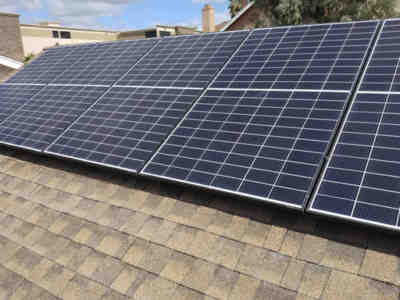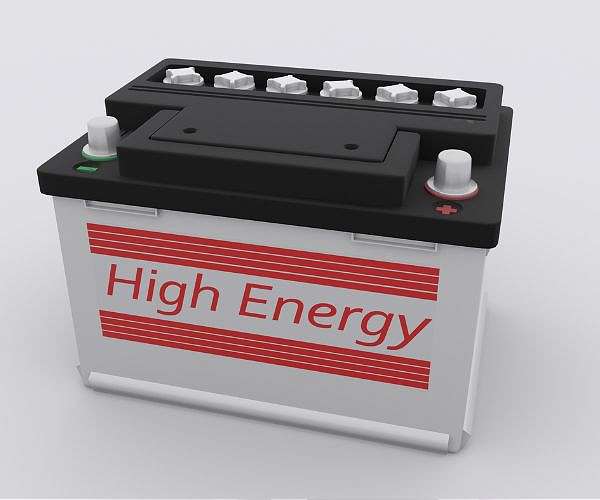Dortmund, Germany (CNN Business) People on the front lines of Europe’s gas crisis are scrambling to get solar panels for their homes and businesses while facing a “perfect storm” that is sending energy prices to record highs.
In the first six months of this year, Germany saw a 22% increase in the installation of solar panels compared to the same period last year, according to data provided by the German Solar Industry Association to CNN Business. This included residential and commercial uses, from small installations on private rooftops to large solar farms, the group said.
For companies in the renewable energy sector, this has led to an enormous boost in sales – and to an additional burden on the supply chains.
Demand for solar energy has already been growing in Europe’s largest economy as energy prices have risen, political incentives have been introduced and the technology’s adoption has become more mainstream. But of late, consumers are also confronted with soaring utility bills, scorching temperatures and renewed concerns about whether they can hold out the heat this winter.
Since Russia invaded Ukraine six months ago, it has sharply reduced its gas supplies to Germany and other EU countries. Just last week, it announced an unscheduled shutdown of its Nord Stream 1 pipeline for maintenance later this month, sending spot natural gas prices to a new all-time high.
The biggest fear for many households is that Russia will turn off the tap completely this winter. The federal government has already launched a crisis management plan that could provide for rationing for companies in this case.
“This [demand] has only grown stronger with the war against Ukraine taking place on our doorstep,” David Wedepohl, executive director of the German Solar Industry Association, told CNN Business.
“It’s something that people are very concerned about.”
German officials have responded to the crisis by calling on consumers to save energy. Some municipalities have already reacted and cut back on basic needs such as light, showers and heating.
Smartflower CEO Jim Gordon said the geopolitical turmoil has also pushed more people to switch to solar power. The company offers sunflower-shaped solar power devices for corporate campuses, universities and homes.
“Our business is booming because there’s a perfect storm of elements coming together and really boosting solar energy,” Gordon told CNN Business.
“People are concerned about energy security,” he said. “An autocratic dictator can turn on the valve on a gas line and turn off the power, but no one can control the sun.”
Soaring sales
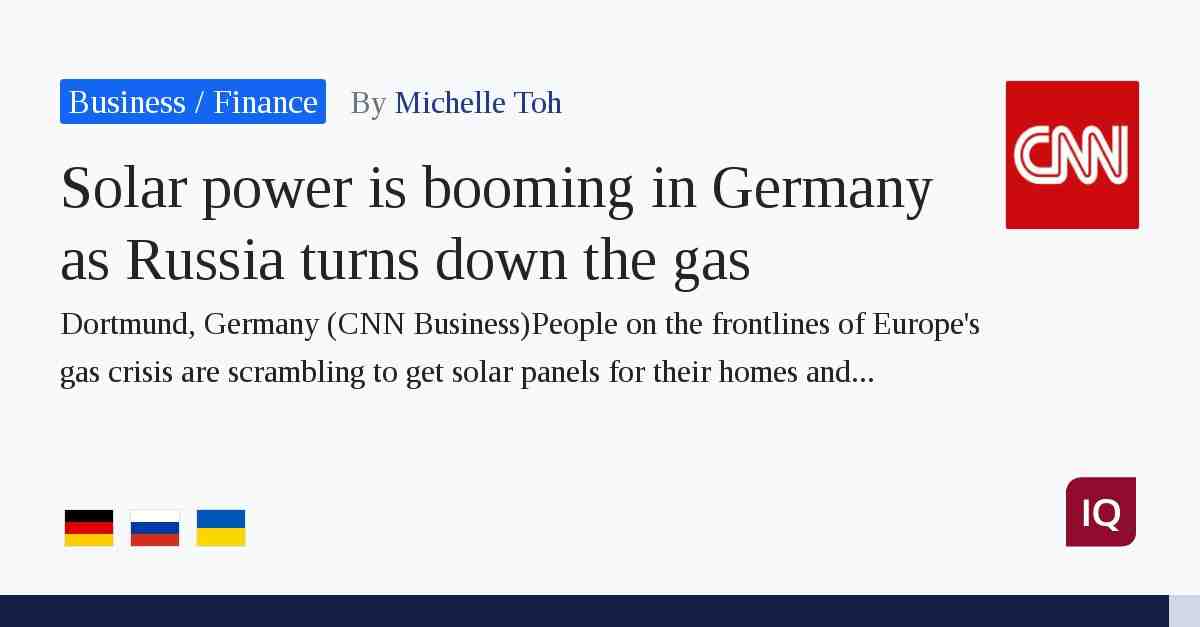
Schneider Electric (SBGSF), a European industrial and energy giant, says demand for its solar-powered heating systems in Germany has “almost doubled” so far this year compared to the same period in 2021. See the article : A general approach to high-efficiency perovskite solar cells.
The company’s sustainability arm, which advises companies on sourcing clean energy, has also hit an “all-time high” in consulting requests, according to Konstantin Elstermann, the company’s vice president of home and distribution.
Similarly, Sonnen, a German supplier of solar batteries, has more than doubled its orders “from a year ago” due to “a growing desire for [people] to run their homes on renewable energy,” said CEO Oliver Koch.
In a statement to CNN Business, Koch said his team had “seen an additional surge in demand since late February” when the war began and “continuously expanded our production capacity to keep up with demand.”
The demand is so great that, according to Managing Director Robert Sawyer, Smartflower now expects its sales in Germany to quadruple this year.
“We did more business in Germany in the first six months of 2022 than we did all of 2021,” Sawyer said, adding that sales in the country have doubled so far this year.
Supply chain hurdles
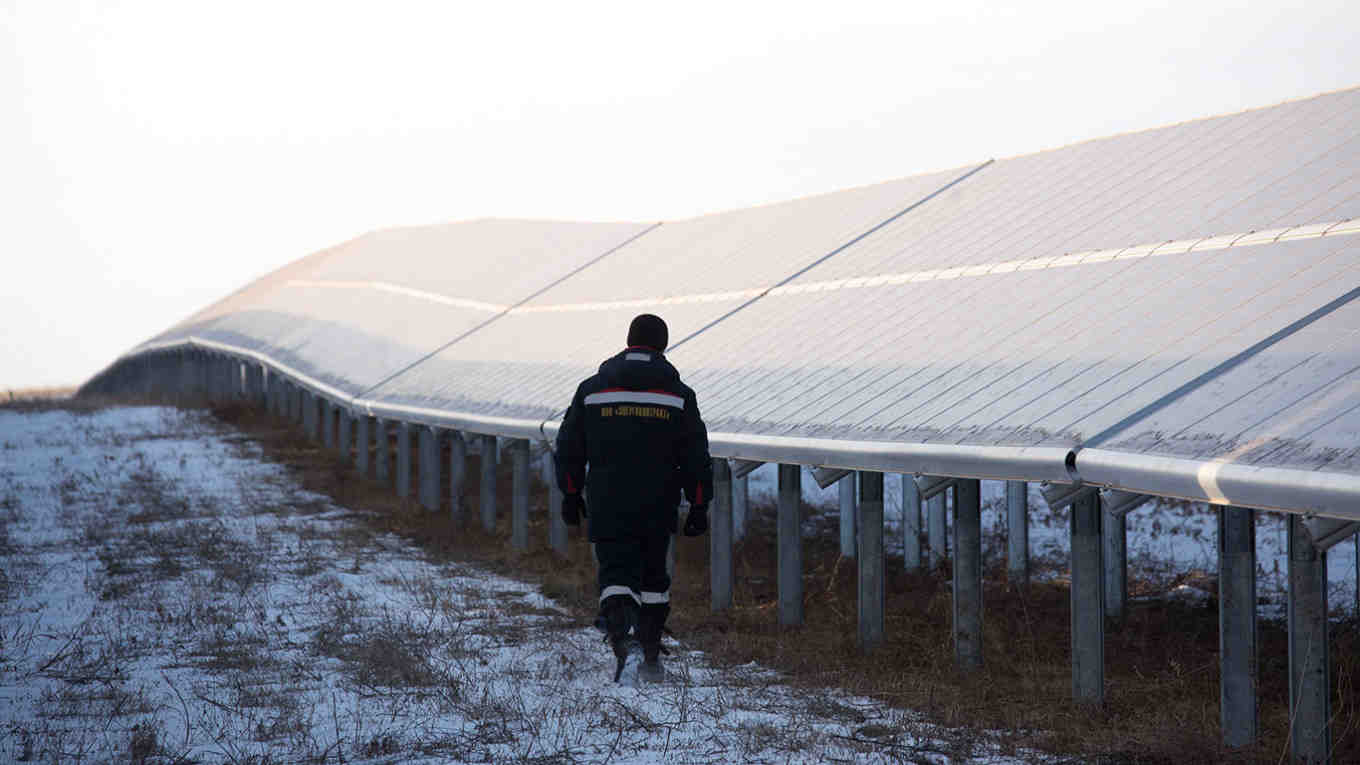
Such booms do not come without challenges, however. On the same subject : Solar technology and community engagement team up to help low-income farmers in India.
The industry is currently facing a massive labor shortage, said Elstermann from Schneider Electric.
“Some electricians book up three to six months in advance,” he told CNN Business.
“This bottleneck almost exceeds the current shortage of raw materials and production capacities. We know that the supply problems due to the pandemic are temporary, but the shortage of skilled workers remains,” said Elstermann.
Wedepohl said the industry is trying to address the problem. Many electricians who have left their jobs over the past decade have returned to the market, while roofers are also being called upon to help with installations, he added.
“A lot of plumbers are out there doing extra shifts, training people and hiring new people,” he said. “It’s a challenge, but it’s definitely a moment we hope we can master.”
The sustainability question
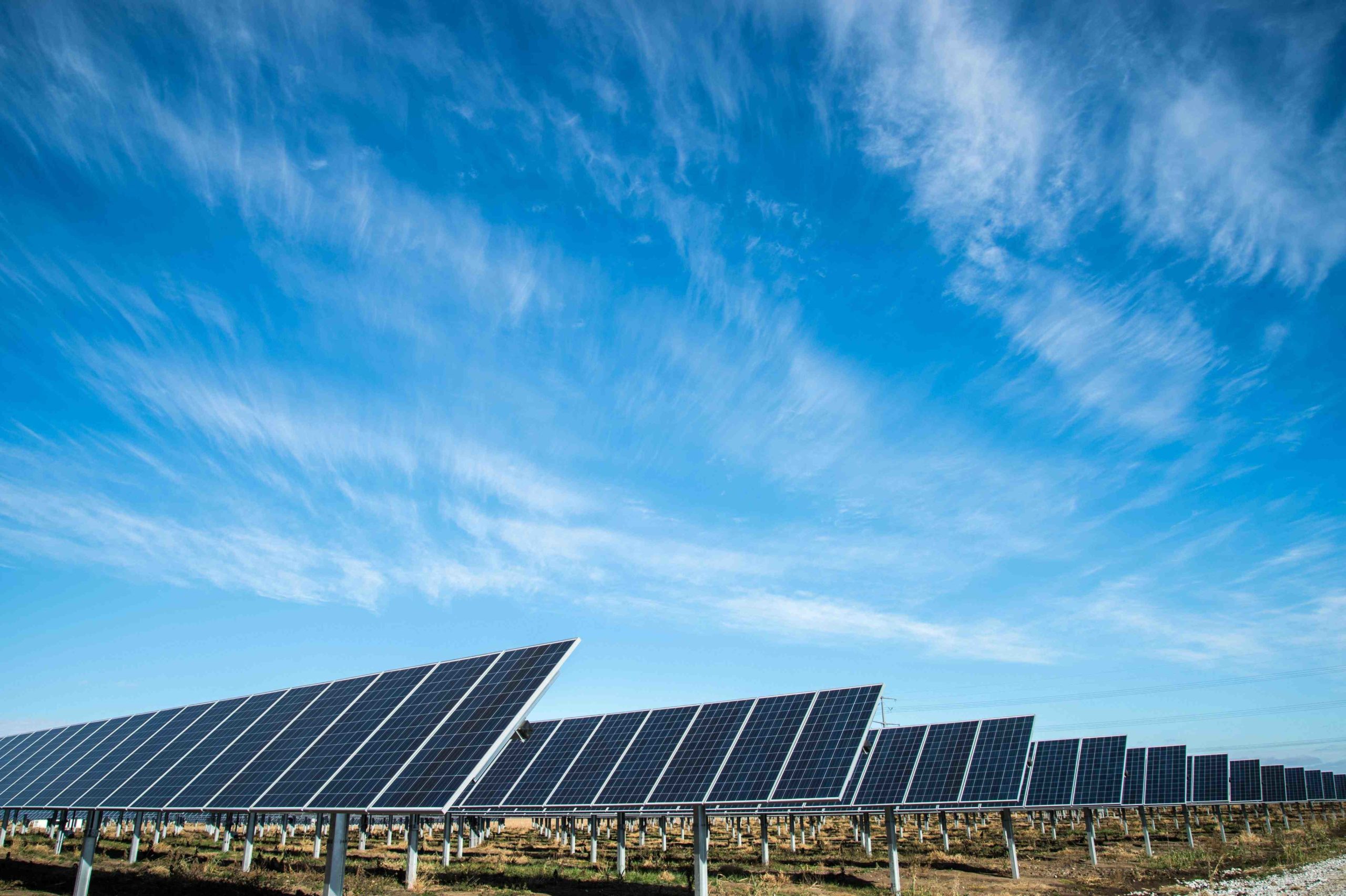
For now, Germany has resorted to ramping up its coal-fired power plants to reduce its gas consumption – and ensure the country keeps the lights on.
But Chancellor Olaf Scholz has made it clear that the government is not happy about this.
“It is bitter that we now have to temporarily use some power plants that we had already shut down because of Russia’s brutal attack on Ukraine. But it’s only for a short time,” he said in a statement last month.
Similar talks are taking place across Europe.
That year, the UK also announced a push into other energy sources, including wind and nuclear power. And for some consumers, alternatives to gas heating, such as B. wood-burning fireplaces, have become more popular.
This month, Austrian climate minister Leonore Gewessler called for more green energy projects to help the country wean itself off Russian gas.
“We need to break free from this dependency — cubic yard by cubic yard, windmill by windmill, PV array by PV array,” she told CNN’s Sara Sidner, referring to the units used in building solar and wind capacity .
“Because we see our dependence on fossil fuels being used as a weapon in a war,” Gewessler said.
“Winter is coming,” Wedepohl said, noting that most homes in Germany are heated with gas. “Europeans…are quite collective in this one too.”
– CNN’s Chris Liakos and AJ Davis contributed to this report.
Why the difference? Politics is the big factor. The federal government has been promoting renewable energies for years through a variety of measures. Perhaps most important are the "feed-in tariffs" allow ordinary people to install solar panels on their roofs and sell the electricity to the grid at cheap prices.
Can solar power the world?
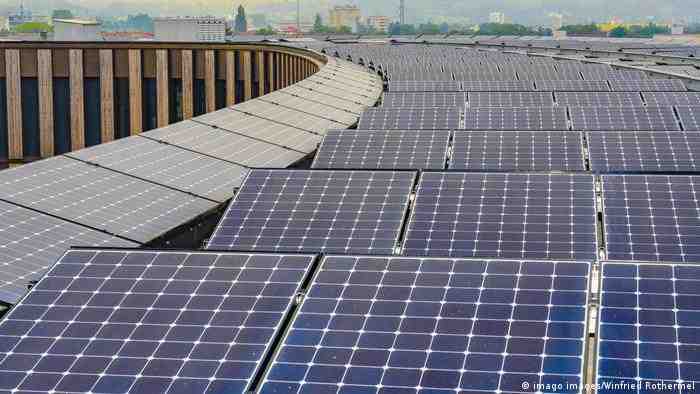
As countries look to end their reliance on fossil fuels that cause climate change, it’s a boom time for renewable energy. Now an international team of researchers has found that if every available roof were fitted with solar panels, they could generate enough electricity to power the world.
Can we supply the world with sun and wind? The Sky’s the Limit: The potential of solar and wind energy is 100 times greater than the world’s energy needs. Renewable energy could power the world by 2050 if prices collapse and replace all fossil fuels LONDON/NEW YORK, April 23 -…
How much solar power is needed to power the world?
Dividing the annual global demand by 400 kWh per square meter (198,721,800,000,000 / 400) we arrive at 496,804,500,000 square meters or 496,805 square kilometers (191,817 sq mi) as the area needed to power the world with solar panels.
Is solar power enough to power the world?
The sun provides more than enough energy to meet the world’s energy needs, and unlike fossil fuels, it’s not going to run out any time soon. As a renewable energy source, the only limitation of solar energy is our ability to convert it to electricity in an efficient and cost-effective manner.
How many solar panels would it take to power the entire country?
According to a report by the National Renewable Energy Laboratory, it would take about 22,000 square miles of solar panel-filled land (about the size of Lake Michigan) to power the entire country, including all 141 million homes and businesses, based on 13-14% efficiency for solar modules.
How much would it cost to power the world with solar panels?
According to the analysis, in order to achieve 100 percent renewable energy in the next 10 years, wind and solar capacity would first have to be massively expanded, which would cost 1.5 trillion US dollars. Next, the US would need to add 900 gigawatts of battery storage, bringing the price to $4 trillion.
Can the world run on solar power?
With improvements in technology, in the near future it would be possible to ship solar power anywhere in the world without the help of batteries. For example, a grid that wraps around the globe could do this with ease. Sun and wind will power half the world by 2050, according to Bloomberg’s NEF forecasts.
Can the world be fully powered by renewable?
If the world switched to fossil fuels, could we generate the energy needed to power the world with 100 percent renewable energy? The answer is yes, according to a new report from LUT University in Finland and the Energy Watch Group, a German non-profit organization.
What would happen if the whole world went solar?
For example, if we instead produce all of the world’s annual electricity with solar panels, CO2 emissions could be reduced to less than 1 billion tons. It would be a difference of 22 billion tons of carbon dioxide that would not have to pollute the air or cause global warming.
Is nuclear better than solar?

Nuclear power has the highest capacity factor, which is roughly twice that of natural gas and coal-fired power plants and nearly three times or more reliable than wind and solar power.
Why is nuclear power better than solar power? A nuclear power plant can operate 24 hours a day and therefore produce more total annual energy. In contrast, a solar power plant only works when the sun is shining and is therefore effective and operational 30% of the time of the day.
Is nuclear cheaper than solar?
When it comes to energy costs for new power plants, onshore wind and solar are now the cheapest sources – they cost less than gas, geothermal, coal or nuclear.
Is nuclear better than solar?
Nuclear power has the highest capacity factor This basically means that nuclear power plants produce maximum power more than 92% of the time of the year. That’s about twice as much as natural gas and coal plants and almost three times or more reliable than wind and solar plants.
Is renewable energy cheaper than nuclear?
In over 24,000 actual market projects, new unsubsidized renewable energy makes electricity 5-13 times cheaper than new nuclear power plants, according to BNEF; The analysis of Handelsbank Lazard finds 3 to 8 times. Renewable energy therefore provides 3 to 13 times more kWh per dollar and can replace 3 to 13 times more electricity from fossil fuels.
Is nuclear energy the cheapest?
Nuclear energy is significantly cheaper than coal in seven out of ten countries and cheaper than gas in all but one. At a discount rate of 10%, nuclear was 3-5 cents/kWh (except Japan: close to 7 cents and the Netherlands) and the capital is 70% of the cost of electricity instead of 50% at a discount rate of 5%.
Is nuclear safer than solar?
A death rate of 0.04 deaths per terawatt hour means that one person would die every 25 years; Nuclear: Nobody would die in an average year – only every 33 years someone would die. Solar: Nobody would die in an average year – only every 50 years someone would die.
Is nuclear better than solar?
Nuclear power has the highest capacity factor This basically means that nuclear power plants produce maximum power more than 92% of the time of the year. That’s about twice as much as natural gas and coal plants and almost three times or more reliable than wind and solar plants.
Is renewable energy safer than nuclear energy?
Most renewable energy sources would cause a death every 20 to 50 years to produce the same amount of energy, and nuclear energy would cause a death every 14 years.
Is nuclear the cleanest energy?
Nuclear energy is an emission-free clean energy source. It produces energy through fission, which involves splitting uranium atoms to produce energy. The heat released by fission is used to create steam, which spins a turbine to produce electricity without the harmful by-products of fossil fuels.
What country has the best energy?
The EIT ranks 115 countries on their energy performance, including resilience and efficiency of generation and transmission, and progress towards cleaner forms of energy. Sweden tops the global rankings, followed by Norway and Denmark.
Which country has the greenest energy? Norway is the country with the highest share of renewable energy in the world, according to new data.
What country has the cleanest energy in the world?
Iceland produces the cleanest electricity per person in the world. Almost 100% of Iceland’s energy comes from renewable sources, mainly hydroelectric (72%) and geothermal (28%).
Which country has the greenest electricity?
Iceland. The land of fire and ice has unique access to a range of renewable resources. A combination of hydroelectric power and geothermal energy meets almost 100% of Iceland’s electricity needs.
What is the cleanest energy on Earth?
Of all energy sources, we consider green electricity (solar, wind, biomass and geothermal) to be the cleanest form of energy.
What countries have 100% clean energy?
Albania, Iceland and Paraguay get essentially all their electricity from renewable sources (Albania and Paraguay 100% hydro, Iceland 72% hydro and 28% geothermal). Norway gets almost all of its electricity from renewable sources (97 percent from hydropower).
What country has the best energy source?
Norway is the largest producer of clean energy, with 98.4% of its energy production coming from renewable sources. The data refers to the year 2020 and is provided by Enerdata, a consulting company that publishes an annual study on the world’s energy, production and consumption and their impact on the environment.
What country has the biggest energy source?
China. As the world’s most populous country and a rapidly developing economy, China is the world’s largest energy consumer and producer. The sheer size of its market has made China an extremely influential player in global energy trading.
What country ranked #1 in renewable electricity?
The production and use of renewable energy is increasing, and almost 30% of the electricity consumed worldwide comes from renewable sources. Norway is the largest producer of clean energy, with 98.4% of its energy production coming from renewable sources.
What is the number 1 energy source in the world?
Oil is the world’s largest source of energy today. It is the dominant source of energy, especially for the transport sector. This interactive map shows the percentage of primary energy that comes from oil worldwide.
What country is 100 renewable?
According to the U.S. Energy Information Administration, there are seven countries that are already at or very close to 100 percent renewable energy: Iceland (100 percent), Paraguay (100 percent), Costa Rica (99), Norway (98.5), Austria (80), Brazil (75) and Denmark (69.4).
Which country will use 100% renewable energy by 2050?
100% renewable power supply by 2050 – Germany has committed to converting its power supply to 100 percent renewable energy by 2050.
Which country is almost 100% run on renewable energy?
Iceland – Built on a volcano, Iceland has tapped into the earth’s natural heat to heat 85% of the country’s homes. Between geothermal and hydroelectric power, the power supply consists of 100% renewable energy.
Is 100% renewable power possible?
How do you get to “200% renewable” or more? It is mathematically impossible for more than 100% of the electricity consumed in the NEM to come from renewable sources: 100% is the limit. Any goal of more than 100% renewables is a different calculation.
What is the largest source of energy?
Fossil fuels are the largest energy sources for electricity generation.
What is most of the energy used for in the United States? The US Department of Energy tracks national energy use in four broad sectors: industrial, transportation, residential, and commercial. The industrial sector has long been the country’s largest energy consumer, currently accounting for about 33% of total energy.
What is the leading source of energy used in the USA today?
Natural gas was the largest source — about 38% — of US electricity generation in 2021. Natural gas is used in steam turbines and gas turbines to generate electricity. Coal was the second largest energy source for electricity generation in the US in 2021 – about 22%.
What is the leading source of energy used in the United States today?
Energy Sources in the United States Petroleum (oil and natural gas plant liquids): 28% Coal: 17.8% Renewable Energy: 12.7% Nuclear: 9.6%
What are the major sources of energy in the United States?
The United States uses a mix of energy sources. Primary energy sources include fossil fuels (petroleum, natural gas, and coal), nuclear power, and renewable energy sources.
What are the top 3 sources of energy in the US?
As you can see, coal has been the largest single fuel for the last several decades, although that is changing as historically low natural gas prices are prompting some “fuel switches.” This was followed by natural gas, nuclear power and renewable energy sources.
What are the top 5 energy sources in the United States?
The EIA reports that the US industrial sector accounts for 22% of all energy consumption…Today, America’s electricity comes from five main sources:
- Natural gas: 33%
- Petroleum (Oil): 28%
- Coal: 17%
- Renewable energies: 12%
- Nuclear energy: 10%
What are the 10 major energy sources in the US?
Generation is detailed for the main fuel sources coal, natural gas, nuclear power, petroleum, hydroelectric power and the other renewable energies wind, wood, other biomass, geothermal and solar.
What are the top 2 uses for energy in the United States?
Types and major end-uses of energy by the US residential sector include: Electricity – all types of energy end-uses. Natural gas – space and water heating, laundry drying, cooking. Heating oil – space and water heating, clothes dryer.
What are the top 2 energy usages for the US?
Download image US primary energy consumption by energy source, 2021 total = 97.33 trillion British Thermal Units (BTU) total = 12.16 trillion Btu 2% – Geothermal 12% – Solar 27% – Wind 4% – Biomass waste 19% – Biofuels 17% – wood 19% – hydropower biomass 40% renewable energy 12% natural gas 32% petroleum 36% …
What are the top 3 sources of energy in the US?
As you can see, coal has been the largest single fuel for the last several decades, although that is changing as historically low natural gas prices are prompting some “fuel switches.” This was followed by natural gas, nuclear power and renewable energy sources.

